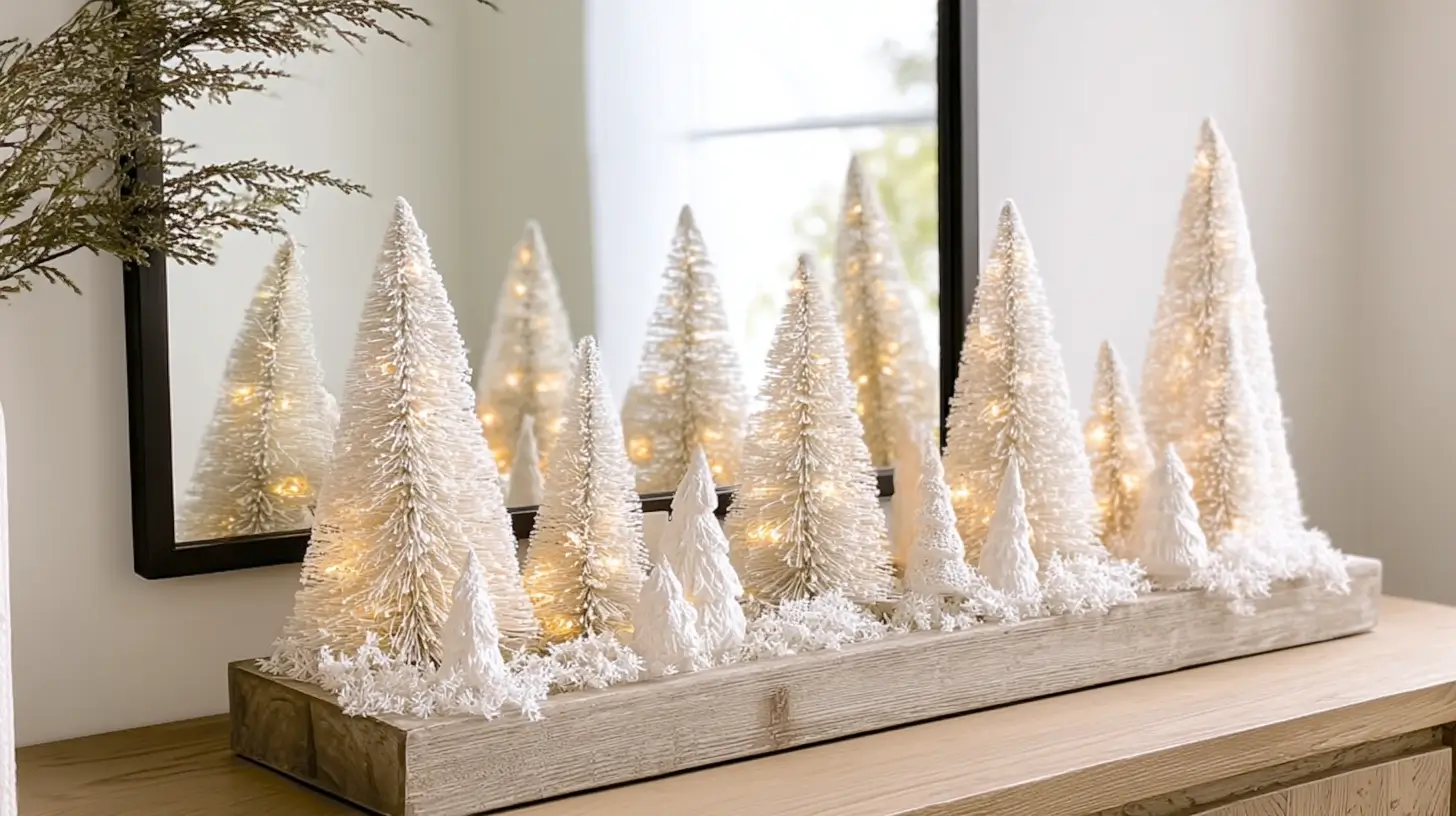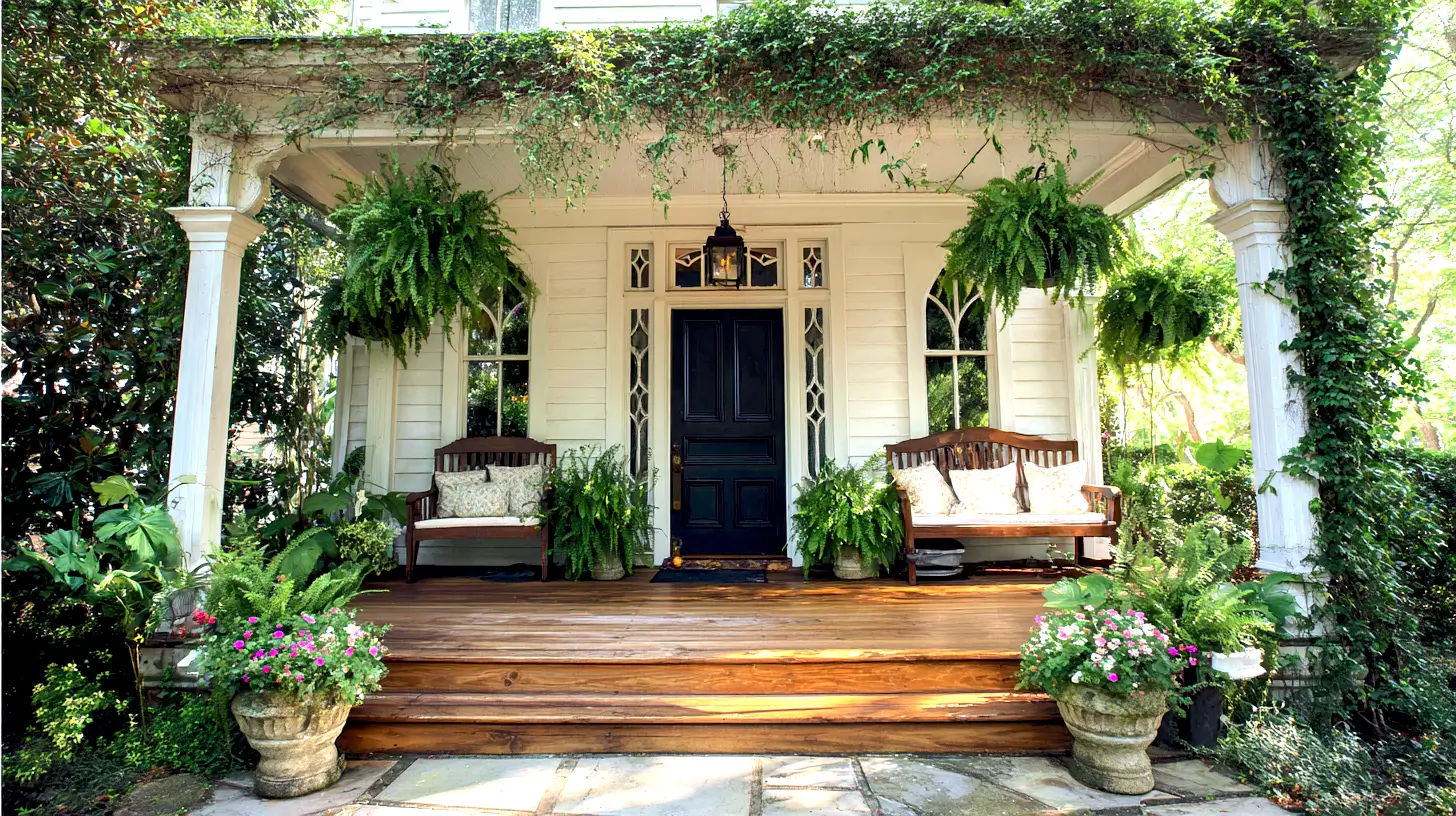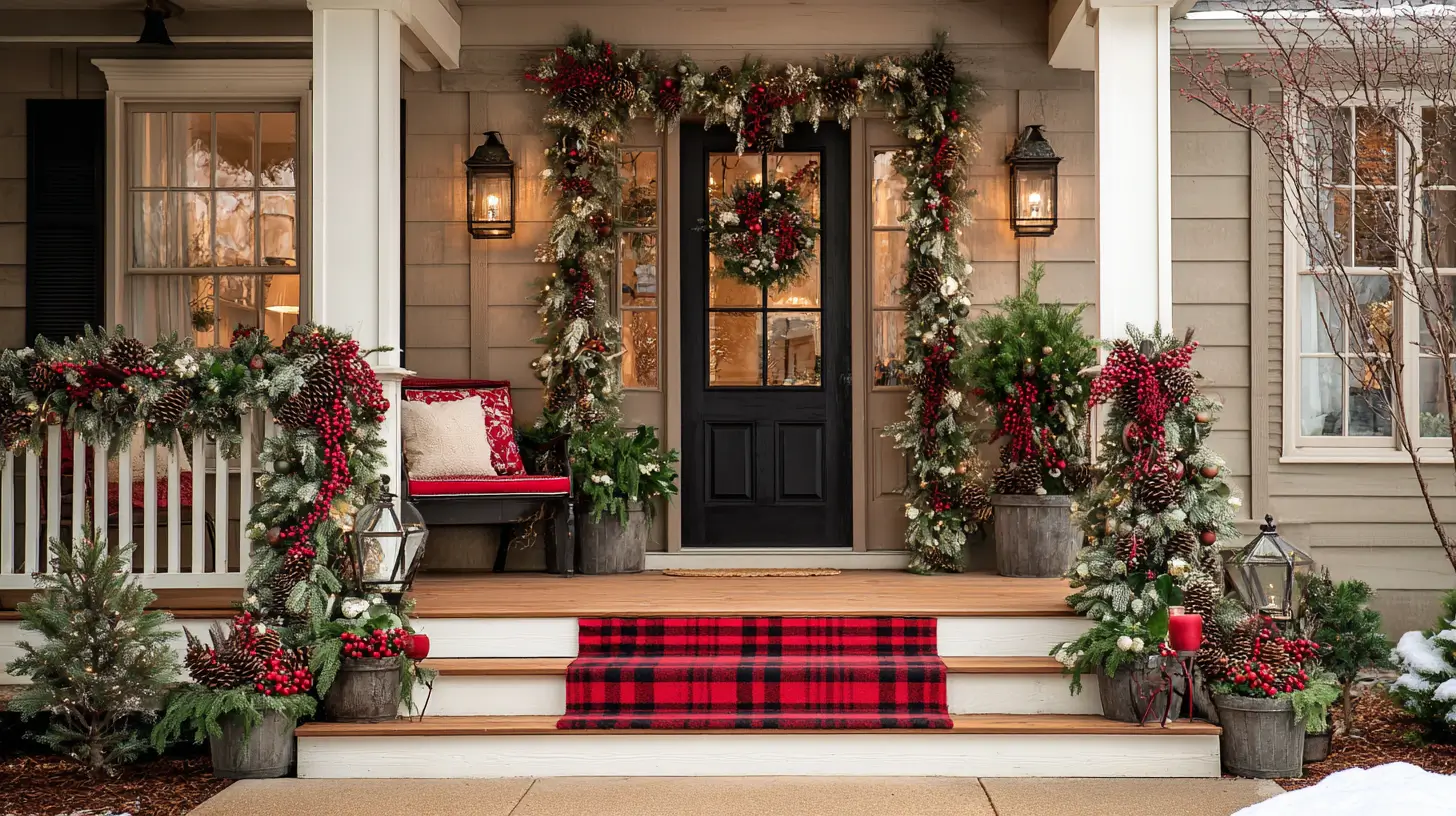When I started thinking about my family backyard layout, I realized how overwhelming it can feel at first. There are so many things to consider. Do you want a space for relaxing? A spot for kids to play? Room for a garden? Or maybe you want it all.
The good news is, it doesn’t have to be stressful. You don’t need a huge yard or tons of money to make a backyard that works for your family. It just takes a little planning and a few smart choices. That’s what this post is here for.
I’ll break everything down in simple steps. We’ll go over where to start and what to think about before you buy anything. I’ll talk about how to make a backyard layout that’s both pretty and practical. I’ll share layout ideas for every kind of family, from families with little kids to families with teens, and even couples with no kids. There’s a way to make your space feel like it fits your life.
We’ll look at how to add zones for things like eating, playing, and gardening—without making it all feel crowded. I’ll include space-saving tricks and low-cost ideas that actually work.
Whether you’ve got a tiny yard, a big open space, or something in between, you’ll find tips that make sense. My goal is to help you create a layout that your family loves spending time in.
This post is packed with practical ideas, easy examples, and tips you can actually use. It’s written for real life. Not for people with landscapers or endless budgets. Just real families with real backyards, looking to make it work.

This site includes affiliate links; you can check the disclosure for more details.
Start With a Simple Family Backyard Layout Plan
Before you bring in a single plant or chair, start with a plan. A family backyard layout works best when it’s built around your life, not just pretty pictures online.
Think about how your family uses the space. Ask yourself:
- Do you need space for kids to run around?
- Do you like to eat meals outside?
- Do you want a quiet place to relax?
- Do you want a garden or some plants?
Every yard is different, and so is every family. You want to make choices that match what you actually do. Not what looks nice in a magazine.
Here’s what helps:
- Walk your yard and take notes.
- Notice where the sun hits and where there’s shade.
- Think about what parts of the yard feel private.
- Look at how close neighbors are.
- Think about your view from inside the house.
Once you know what’s working and what’s not, sketch out some zones. You don’t need to be an artist. Just rough shapes to show where you might want things.
Common zones include:
- A place to eat
- A spot to relax
- A play area
- A garden corner
- A firepit or hangout space
This gives you direction before you start buying things. It also helps you avoid a cluttered look. Every piece has a purpose and a place.
The best family backyard layout is one that fits your lifestyle. Start with a rough plan and adjust as you go. You’ll be glad you didn’t skip this step.
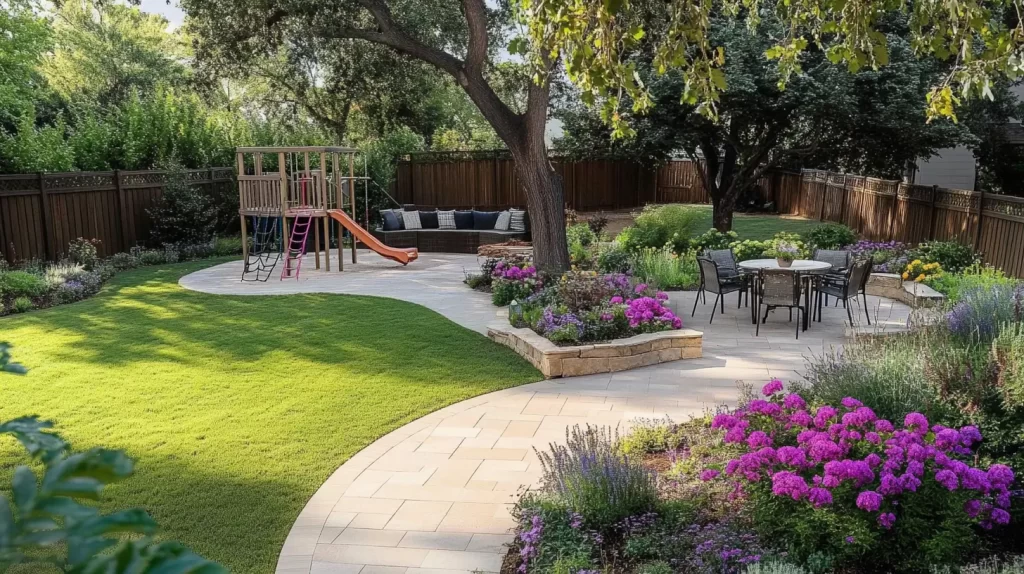
Divide Your Layout Into Family Backyard Zones That Work
When your backyard has zones, everything feels more organized. You don’t need walls—just a little planning.
Here are simple zones to consider:
Eating Area
- Add a picnic table or outdoor dining set.
- Use an umbrella or a pergola for shade.
- Place it near your kitchen door if possible.
Relaxing Spot
- Add a couple of chairs or a bench.
- Use outdoor cushions or even a hammock.
- Add string lights or lanterns for a cozy touch.
Kid Play Area
- Pick a spot you can see from inside.
- Add mulch or rubber mats to protect falls.
- Use a small playhouse, sandbox, or slide.
- Keep toys in a bin or bench with storage.
- Choose a sunny spot for veggies or flowers.
- Raised beds help keep it neat.
- Add a little fence to keep pets out.
Firepit or Hangout Zone
- Use gravel or pavers for the ground.
- Add chairs in a circle around the firepit.
- Keep it away from fences and trees.
You don’t need every zone. Just the ones that make sense for your family.
Here’s what helps tie it all together:
- Use stepping stones or paths to connect zones.
- Choose a few matching colors for pillows or decor.
- Repeat materials like wood or metal for a pulled-together look.
A good family backyard layout feels natural. It flows from one area to the next without feeling crowded. Zoning makes that easy.
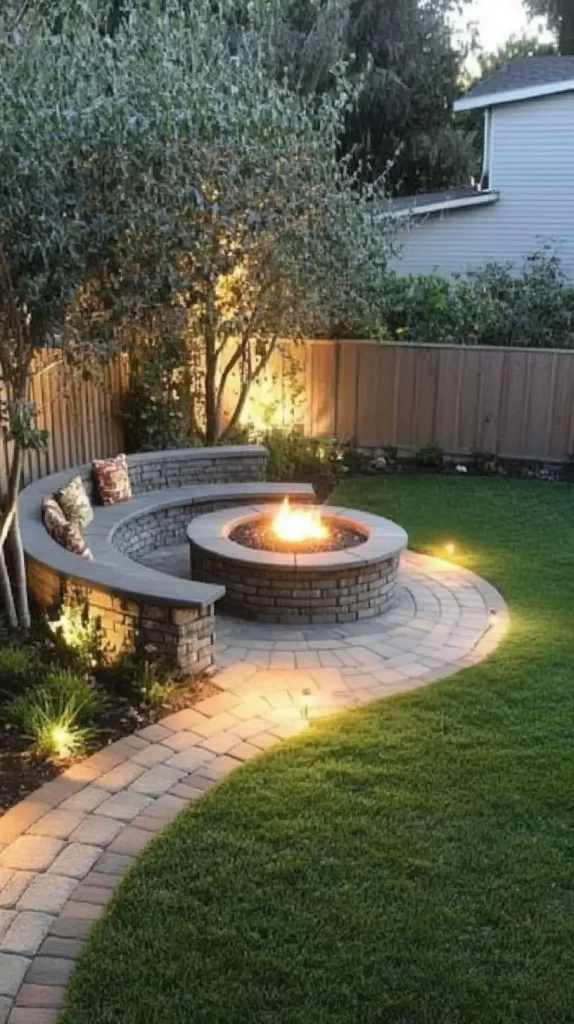
Family Backyard Layout Ideas That Work
Let’s talk about the part that brings it all together—the layout. A good layout isn’t about being fancy. It’s about using your space well. A smart family backyard layout makes everything feel easier. It helps your space feel roomy, even if it’s small.
Start by thinking in shapes. Rectangles and squares help you break up space. Don’t try to fill every corner. Let each area breathe a little.
Here are layout tips that work for real-life backyards:
Keep Play Areas in Sight
- Put swing sets or sandboxes near the house.
- Make sure you can see kids from the kitchen window.
- Use mulch or rubber tiles to mark off this zone.
Create a Cozy Eating Space
- Place your table on a patio, deck, or even gravel.
- Try placing it close to the back door for easy food trips.
- Use rugs or planters to “frame” this zone.
Make Room to Relax
- Use a corner for two chairs and a small table.
- Add an umbrella or some string lights overhead.
- Face the chairs toward the garden or lawn for a peaceful view.
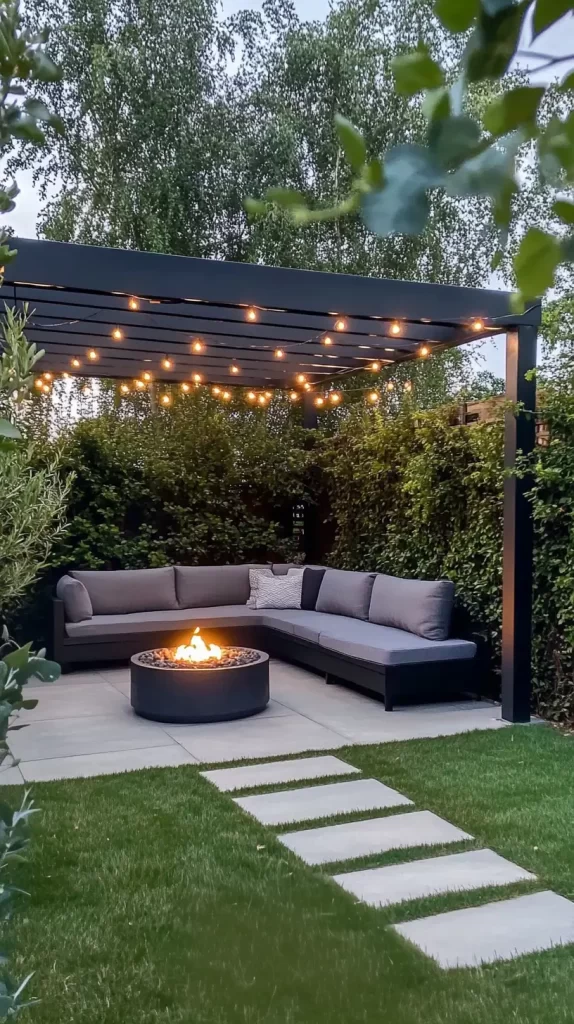
Think in Layers
- Closest to the house: dining or sitting area.
- Middle zone: play space or open lawn.
- Farthest back: garden, firepit, or hammock.
Walkways Help Everything Flow
- Use pavers, gravel paths, or stepping stones.
- Guide traffic from one zone to the next.
- Keep paths wide enough for strollers or wagons.
Don’t Forget Corners
- Add tall plants to soften the edges.
- Tuck in a bench or chair with a small plant table.
- Use corners for storage or compost bins, too.
A great family backyard layout doesn’t need to be perfect. It just needs to make sense for your life. Once it does, you’ll want to be out there all the time.
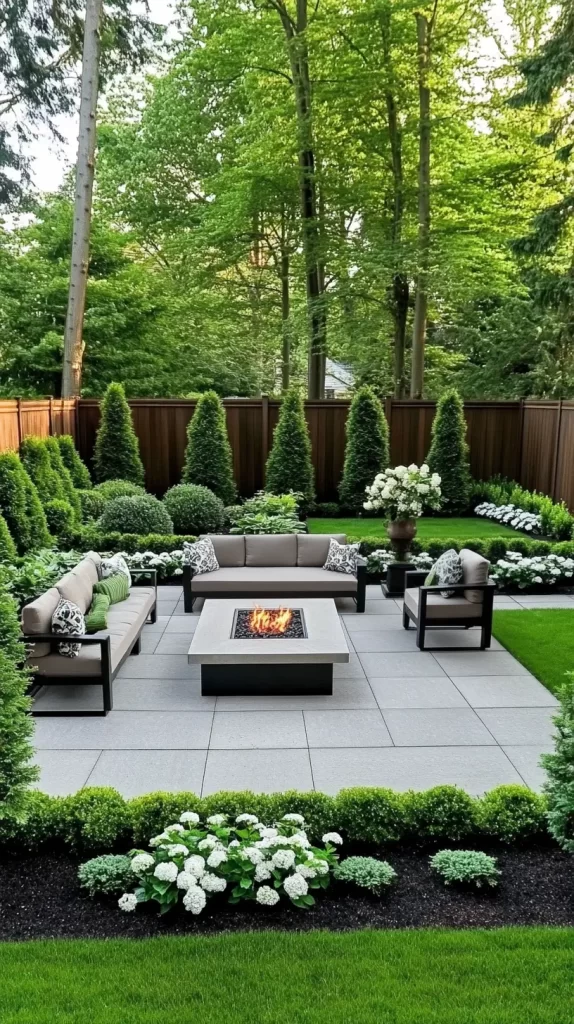
Smart Furniture and Storage Ideas
Backyard furniture should be comfortable, useful, and easy to store. You don’t need fancy sets. You just need pieces that make sense.
Here are simple tips that make a big difference:
Pick Furniture That Fits
- Avoid oversized sets if your yard is small.
- Try benches or folding chairs for more flexibility.
- Bistro tables are great for tight corners.
Look for Storage Options
- Choose a bench with built-in storage for toys.
- Add a deck box for cushions, balls, and tools.
- Hang hooks for garden tools or towels.
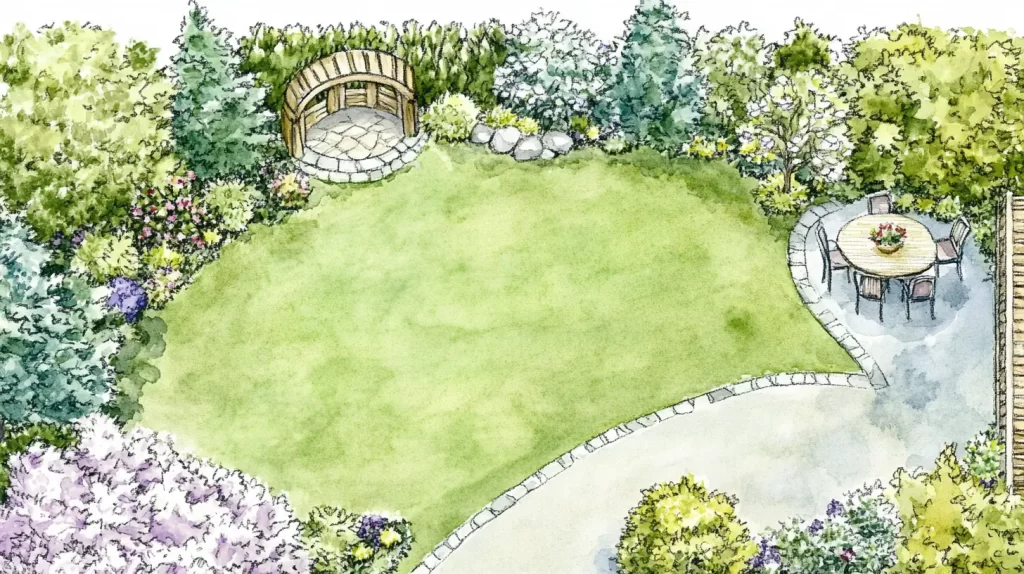
Weather Matters
- Pick materials that can handle rain and sun.
- Plastic, metal, or treated wood last longer outside.
- Cover furniture or move it when not in use.
Make Things Multi-Purpose
- Use a coffee table that also stores blankets.
- Turn crates into side tables or plant stands.
- Use ottomans that double as seats or footrests.
Add Comfort
- Use outdoor cushions and washable covers.
- Toss on throw pillows for color.
- Add a rug made for outside use.
When your furniture works hard, your layout feels bigger. It gives you more ways to use the same space. That’s the goal of a smart family backyard layout. It should be flexible, cozy, and clutter-free.
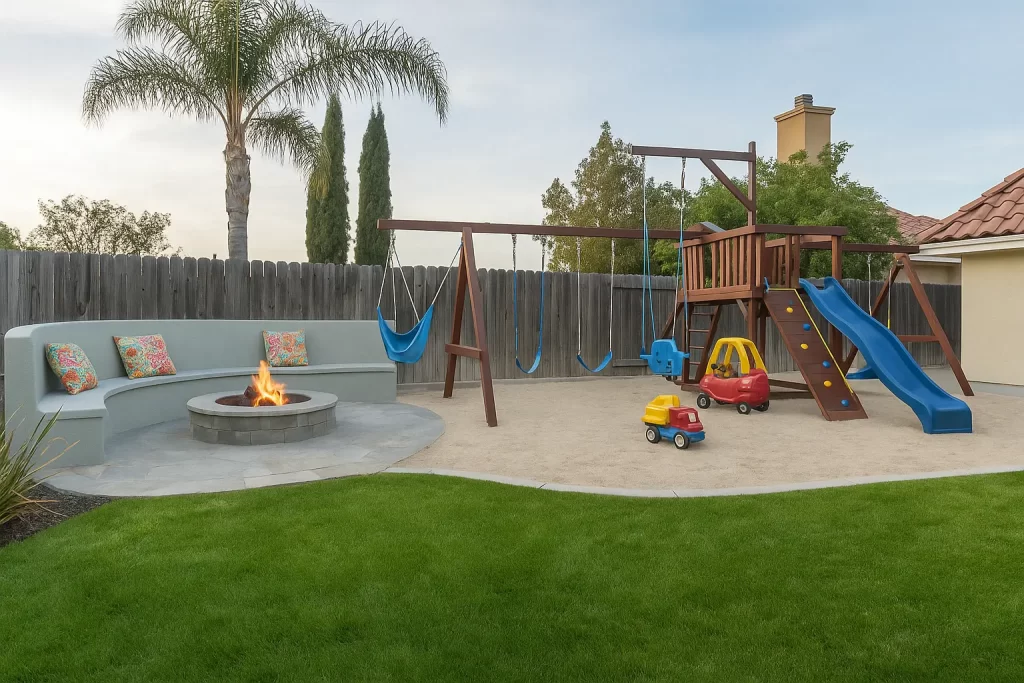
Add Fun Features for All Ages
A great backyard isn’t just pretty. It’s a place where people want to spend time. That means adding a little fun.
You don’t need a pool or playground. Simple touches can bring joy.
For Younger Kids
- Try a small plastic slide or sandbox.
- Use a water table on hot days.
- Add a chalkboard wall or paint fence panels with chalkboard paint.
- Make a scavenger hunt path with hidden “treasures.”
For Older Kids
- Add a basketball hoop or soccer goal.
- Use string lights and music to create a teen hangout.
- Try a zipline kit if you’ve got the space and trees.
- Hang a hammock or egg chair for reading.
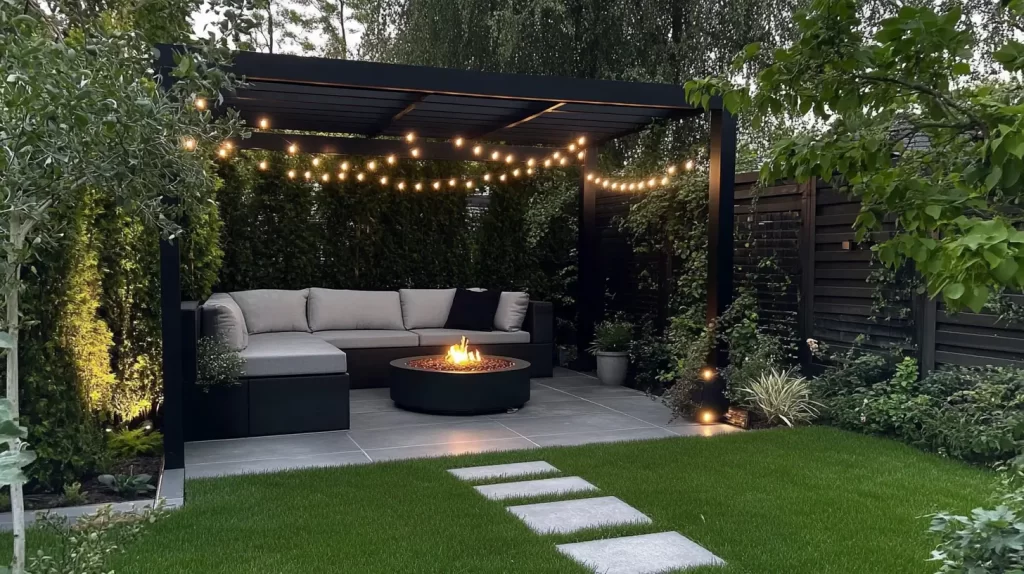
And For Adults
- Add a firepit for relaxing evenings.
- Hang a porch swing or outdoor loveseat.
- Include a grill or small outdoor bar.
Family Fun Ideas
- Set up a cornhole game or giant Jenga.
- Use a projector and sheet for movie nights.
- Host s’mores nights around a firepit.
- Keep board games in a weather-safe box for outside use.
Fun doesn’t have to take up tons of space. It’s about using what you’ve got. When the whole family has something to enjoy, your layout works even better.
That’s what a family backyard layout is all about—bringing everyone together in ways that feel natural.
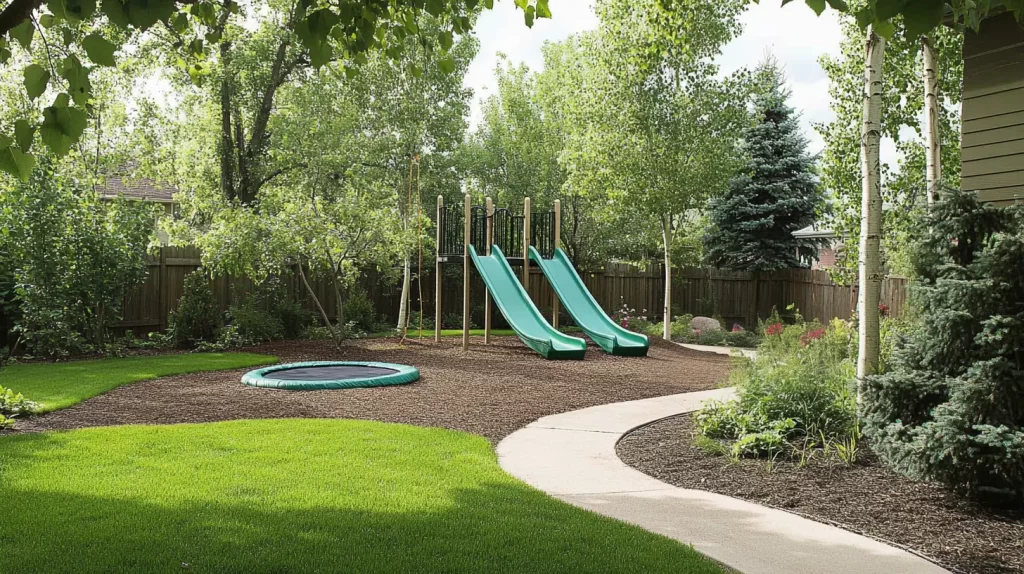
Budget-Friendly Ways to Update Your Layout
Making your backyard feel fresh doesn’t have to cost a fortune. A few low-cost updates can change the whole feel of the space.
Here are some budget-friendly ideas:
Update With Paint
- Spray-paint old chairs or tables.
- Paint your fence a fresh, light color.
- Add a painted mural to a shed or wall.
DIY Decor Projects
- Use mason jars as lanterns with battery candles.
- Make planters from old buckets or crates.
- Use pallets to build furniture or a small deck.
Thrift and Repurpose
- Find outdoor pieces at garage sales.
- Use secondhand stores for decor.
- Repurpose items you already have.
Lighting Adds Magic
- String lights across your space.
- Use solar lights along walkways.
- Add candles or lanterns for a soft glow.
Inexpensive Greenery
- Use seeds instead of full plants.
- Swap plants with neighbors or friends.
- Use pots so you can move plants around.
Smart Layout Tricks
- Move furniture around for a new feel.
- Use rugs to define zones.
- Hang curtains on a clothesline for a cozy vibe.
Even small changes can make your family backyard layout feel brand new. The trick is knowing what to change and what to leave alone. You don’t need more stuff. Just smarter use of what you’ve got.
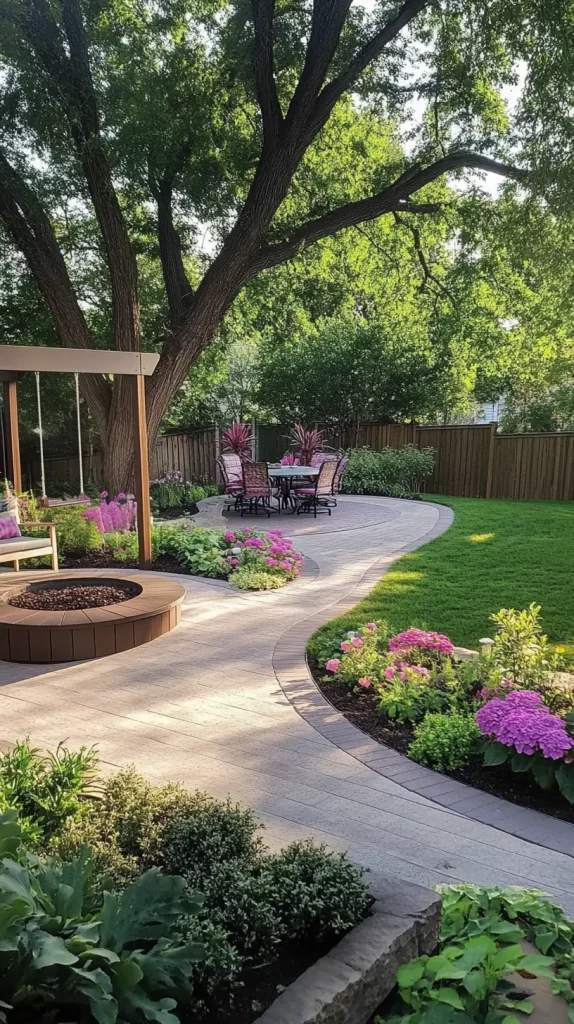
Easy Maintenance Tips for a Low-Stress Yard
Let’s be honest—if your backyard is hard to keep up with, you won’t use it. The best family backyard layout includes ways to keep it low-maintenance.
Here are simple ways to make upkeep easier:
Choose Easy-Care Plants
- Use native plants that thrive in your area.
- Go for perennials so you don’t replant every year.
- Group plants by how much water they need.
Keep Grass Simple
- Mow less by leaving grass a bit longer.
- Use ground cover plants or mulch to fill space.
- Avoid tiny corners that are hard to mow.
Smart Watering Tips
- Water early in the day.
- Use a soaker hose or drip system.
- Add mulch to help keep water in the soil.
Furniture and Decor Care
- Use covers for your seating when not in use.
- Choose washable cushion covers.
- Wipe things down every few weeks.
Clean-Up Tips That Work
- Keep a broom or leaf blower nearby.
- Have a bin for outside toys.
- Use outdoor mats to reduce dirt tracked inside.
A beautiful backyard isn’t helpful if it’s a chore to care for. Your layout should feel fun, not like extra work.
With a little planning, your yard can look great and stay that way—without needing hours of effort every week.
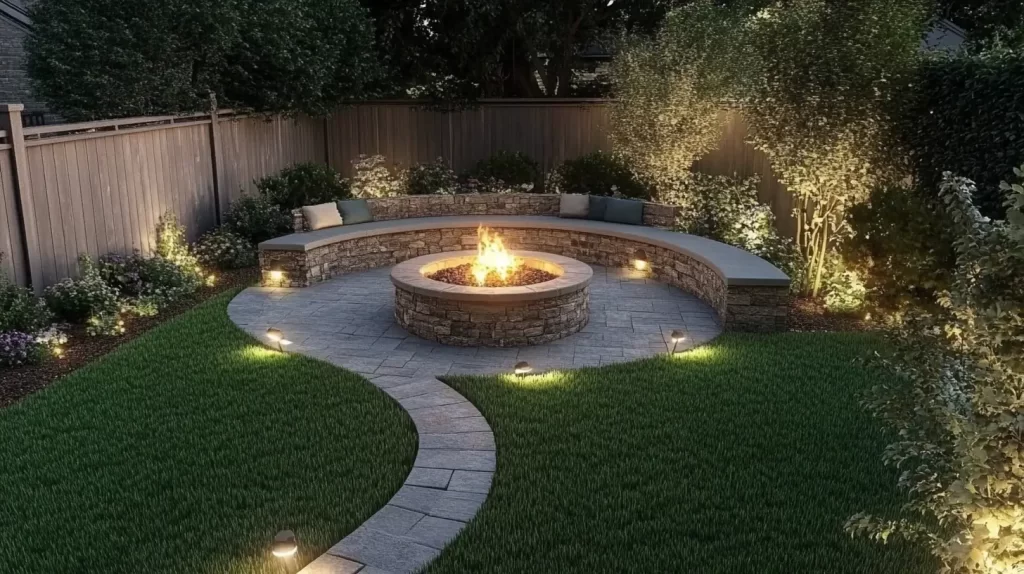
Final Thoughts
Planning your family backyard layout isn’t just about looks—it’s about how your space works for real life. Whether you have a big yard or a small one, you can turn it into a place your family enjoys. And you don’t need a fancy designer or a huge budget to do it.
Here’s a quick recap of what we covered:
- Start with a simple plan that fits your family’s needs.
- Create zones like dining, play, relaxing, and gardening.
- Choose smart, weather-friendly furniture with built-in storage.
- Add fun features for all ages, from kids to grownups.
- Use budget-friendly updates like DIY decor and thrifted finds.
- Keep it low-maintenance with easy plants and smart watering.
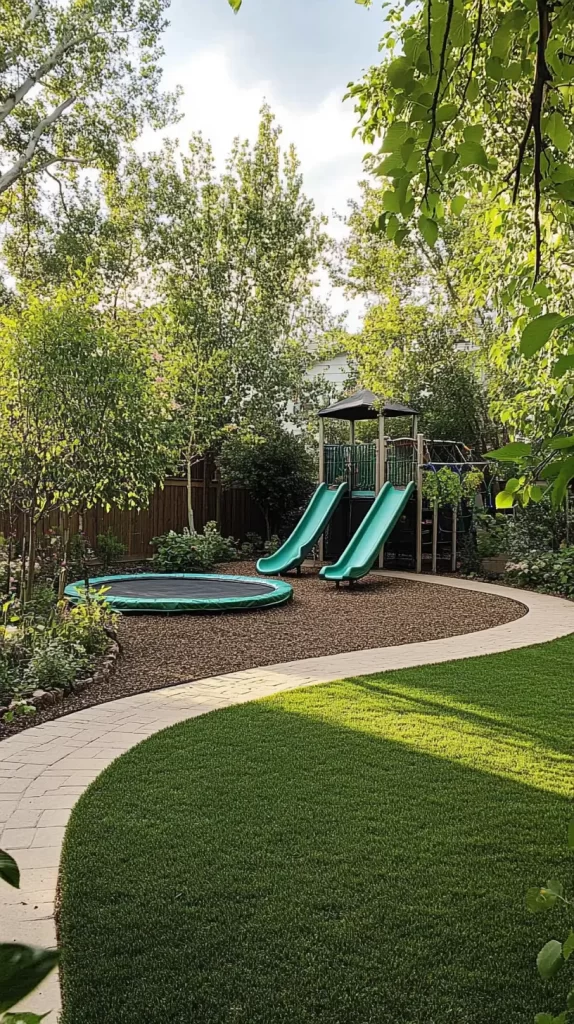
When you use a family backyard layout that’s made just for you, the space becomes so much more than a yard. It becomes a spot where everyone wants to be.
And if you’re anything like me, once it’s set up, you’ll want to keep things fresh. That’s where Pinterest can be a huge help. You’ll find creative layout ideas, clever hacks, and fun project ideas that match your vibe and your yard size. I like using Pinterest to save ideas for things I might want to try next season.
The truth is, your backyard doesn’t need to be perfect. It just needs to feel like yours. A space that works, without all the fuss.
So take these ideas, walk your yard, and start planning. You might be surprised how easy it is to shape your space into something special. One step at a time. One zone at a time. You’ve got this.

